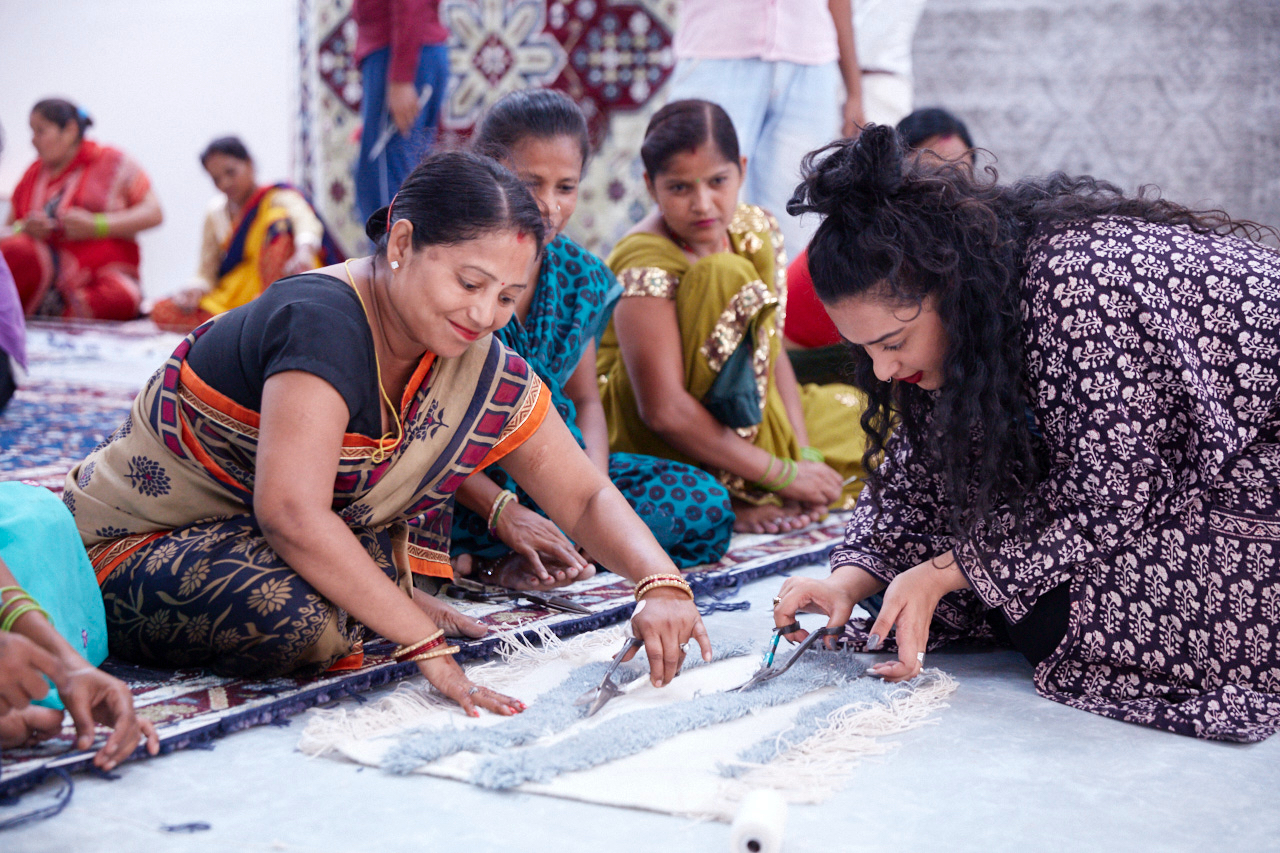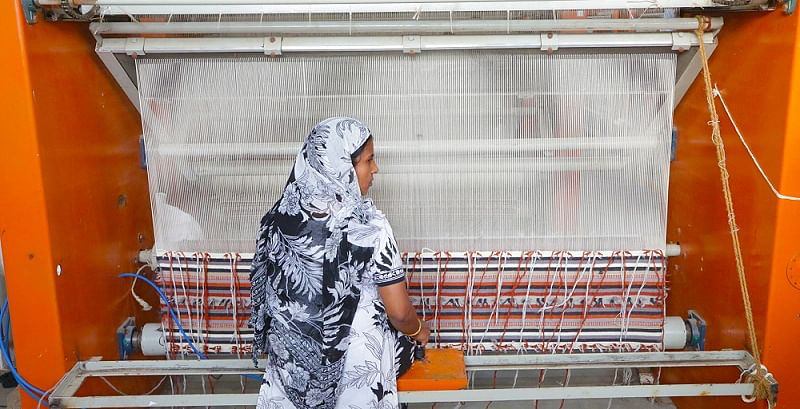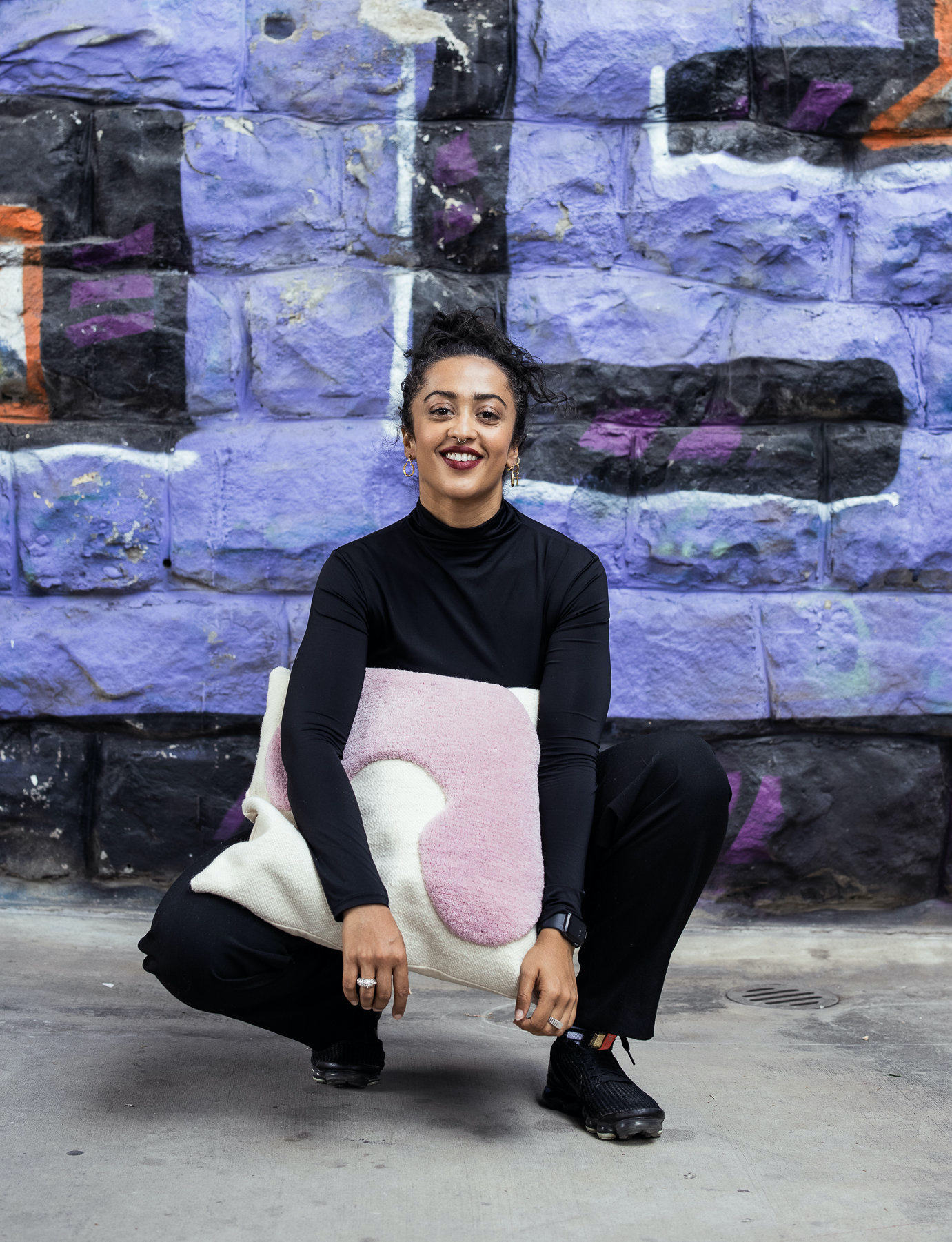You have been working as a designer for a well-known Swedish retailer over the last few years and have been focussing on several craft-based initiatives in this context. The “Klarafina” and “Moakajsa” projects being part of those or the more recent product line “Lokalt”. Why were these initiatives started and what is the philosophy behind them?
We started focussing on several craft-based projects as part of our Ikea social entrepreneurship initiative. Ikea social entrepreneurship is a program that started with the vision of honouring unique skills and competences and give them a global platform to stand on – resulting in better lives for those who need it most; the vulnerable sections of society. This has been accomplished by partnering with enterprises that produce products and services that in turn empower people who struggle to provide for themselves and their loved ones. The result is financial independence and life-changing opportunities for families and communities; with improved health care, education and gender empowerment. The Ikea social entrepreneurship program creates work for more than 30,000 people, with products available globally and the ambition is to reach 95,000 jobs in the coming years, which will be achieved by scaling up existing business partners while adding new partners that can scale quicker and employ even more people,
faster. Klarafina, Moakajsa and Lokalt are part of the same initiative as it provides livelihood and employment for a group of artisans, who often struggle to secure decent work or long-term employment while bringing unique handicraft to a worldwide audience. Rural India was severely hit by the COVID-19 pandemic, and many of the artisans at the social entrepreneur Rangsutra worried about losing their income. We talked to Sita and Sumita from Rangsutra about how they managed to find new ways to continue their operations after the lockdown, and the work with Hervor and Hallvi handmade pillowcases is a result of this process.
For these projects you have worked predominantly with rural artisans. Do you think that artisans who live and work in a rural environment are more adept at incorporating circularity in their work and practices which are sustainable and environmentally conscious?
Absolutely! Sustainability has always been a core component of Indian culture. Its philosophy and values have underscored a sustainable way of life. For many villages across India sustainability and circularity are rooted in tradition and an everyday part of life. People in rural communities continue to live close to nature and continue to live a simple lifestyle that benefits their communities but also the biodiversity around. We have only started messing up in a big way in recent times, with a growing population, greater prosperity and the search for convenience.
We can certainly learn so much more from our local village communities on how they use materials, upcycle and reuse products and find clever ways to solve a problem without destroying the environment around us.

You work with organisations like Rangsutra who coordinate the commissions given by brands to artisans. Are these kinds of organizations vital to make long-term collaborations feasible?
Organisations like Rangsutra are essential to forming long term partnerships with artisans as they act as a bridge and have a strong understanding of the two sides, be it the artisans or Ikea. It also helps in having a consistent and uniform business relationship. This is the key to a successful partnership that the benefits are mutual. The same goes for Ikea social entrepreneurship, where the enterprises and the company gain valuable know-how from each other; resulting in unique and covetable collections, products and services.
How would you describe the collaborative processes during the projects mentioned above. Is mutual inspiration a factor in the design process and in achieving an end-result or is the design coming from you and the execution from the artisans?
For me as a designer it’s very important to have an equal collaboration with our artisans. be it for my latest collection “Lokalt” or new cushion covers “Hervor” and “Hallvi”, my process has been to share and exchange knowledge from the different craft clusters and take inputs from them as they are the ones who are sitting with a lot of knowledge. They all come from different backgrounds and age groups and yet everyone is so open and willing to try new things. They taught me to be more compassionate. We had a very intimate partnership where I learnt what their strengths are and made me understand how design doesn’t work in isolation and that it has to be a patient and evolving process.

What are the practical steps of your collaborations with the artisans.
More than ever before, as designers in current times, we have an active responsibility to work towards adding value to the community through design. I have been very fortunate to have worked with the craftswomen in Jordan and ceramicists in Thailand. By means of such projects we are able to empower these women, enhance their skills and make them financially independent. For my latest collection “Lokalt” (For this collection we combine local up-and-coming designers with experienced local artisans from Jordan, Thailand and India to create a collection that focuses on socializing and celebrating. The collection is based on materials such as jute, banana fibre, cotton and stoneware.), I used a Punja loom which is a traditional manual loom technique for rugs and dhurries and one of India’s oldest weaving techniques. In the traditional punja looms, the fundamental weaving processes such as shedding, picking and beating-up involved a lot of physical activity, repetitive hand movements and uncomfortable seating arrangements leading to fatigue on the part of the operator. Owing to the long training hours needed and the effort involved, there has been a major decline in weavers’ interest to take up this profession. To revive the profession and create sustainable business in the region, a real change in outlook was needed. Hence Ikea’s decision to bring innovation to the age-old loom. A new Punja loom was introduced that will facilitate the growth of a more competitive and sustainable carpet production, while also providing a better life for the weaver community. The loom is designed to produce better quality rugs and products while increasing the productivity by 25-40%. The new loom has the technology needed to transform the rug industry and through that keep the old Punja weaving technique alive.
With form, function, quality, sustainability, and cost in mind, we came up with a modern and expressive take on traditional handcraft full of quirky details that tell the story of my learnings in India as a fashion student. After brainstorming with the rest of the designers as a team I sent sketches to the rug weavers in India to interpret the same. I was also inspired by the “kantha” embroidery stitch, traditionally used in India for both garments and quilts, and added an enlarged interpretation of the running stitch effect to one of the smaller rugs. With product ideas and research in hand, I went to see the artisans and finalize the design. When I could meet the craftspeople and see the prototypes in real life, we could discuss how to make the design even better. It was a lot of hands-on work with many trials and errors to find the right construction and material for the right price for a given product. Improvements were being made till the end of the design process.
The company you are working for is producing most of their products in large quantities. Price points,generally, must be quite low. What effect does this have of the actual quality of the crafts used and what is the potential for keeping skills at the level that craft excellence requires?
The partnerships between Ikea and social businesses have grown steadily since the start in 2012, initially employing a modest 100 artisans and selling only in selected markets. Today the Ikea social entrepreneurship program creates work for more than 30,000 people, with products available globally and the ambition is to reach 95,000 jobs in the coming years, which will be achieved by scaling up existing business partners while also adding new partners that can scale quicker and employ even more people, faster. We want to highlight the handmade value of all our products and as a designer I want to integrate the beauty of handcraft and imperfections in our mass production process. However, we have strict quality control where it’s needed, and they are ensured through IWAY. Ikea has high standards for all suppliers through something called IWAY. IWAY sets social and environmental requirements for all their suppliers; making sure that people are well treated, resources are protected, and workspaces are healthy and safe. A social business meets these standards, but chooses to go beyond IWAY to reach people furthest from the job market.
The nature of limited collections and seasons, probably, mean that you are working with a specific set of artisans only for a limited time. How do you ensure that longstanding relationships are formed and that artisans also keep working in their craft once the project is finished for you?
Social enterprises around livelihoods are actually quite rare, but those are the ones that need to be scaled. That’s why engaging with big business is crucial to see the larger impact. we have several collections planned in line, so when one project gets over they are ready to work on the next line of products for another upcoming collection. To give you the most recent challenge: we realised early on how hard the COVID-19 pandemic would hit, especially for a social entrepreneur and all the woman working for them. For Ikea it was important to confirm early on the orders which had been planned, giving the partner possibilities to continue their operations and for the artisans to earn a living. Knowing that social entrepreneurs like Rangsutra are acting as frontline responders during the pandemic, it was important for Ikea to confirm the planned orders early. Ikea Social Entrepreneurship B.V, established in 2018, was also able to turn grants designed to accelerate social businesses into emergency relief grants. This way Rangsutra could continue to pay the artisans’ wages during the lock-down, providing livelihoods and services to some of the most vulnerable populations.
